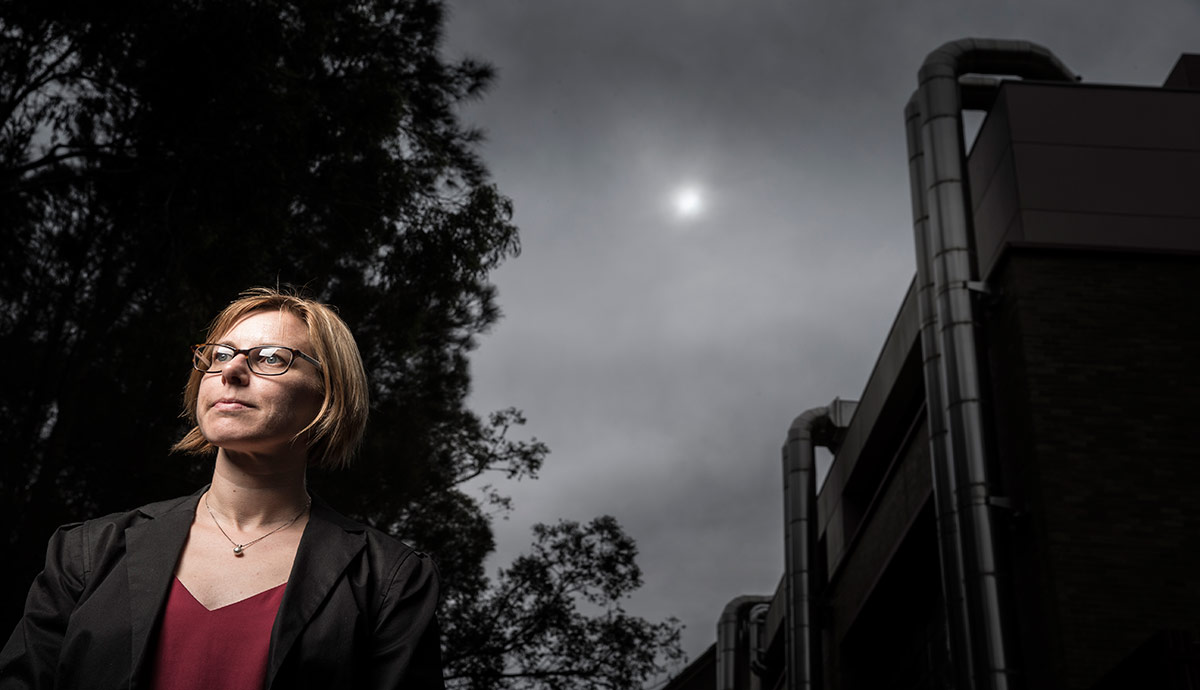October 25, 2016
Chemistry researcher honoured with L’Oréal-UNESCO Women in Science Fellowship
A fellowship from L’Oréal-UNESCO could be the key to understanding compounds that contribute to climate change and air pollution for a University of Wollongong (UOW) researcher.
Dr Jenny Fisher from UOW’s Centre for Atmospheric Chemistry, has been announced as one of three recipients Australia-wide for the 2016 L’Oréal-UNESCO For Women in Science Fellowship, giving her the opportunity to progress her studies into how different emissions interact with one another.
“When I was little, I was intrigued by outer space and I knew I wanted to work for NASA. As my career progressed I felt that understanding my own planet was more important to me, so I made the change to researching the chemistry of our atmosphere,” Dr Fisher said.
The L’Oréal-UNESCO For Women in Science initiative began in 1998 and since that time the L’Oréal Foundation and UNESCO (the United Nations Educational, Scientific and Cultural Organization) have strived to support and recognise accomplished women researchers, encourage more young women to enter the profession and to assist them as they progress their careers.
Each year, the program awards four $25,000 fellowships to female scientists - three for Australia and one for New Zealand.
Through the financial support provided by the L’Oréal-UNESCO For Women in Science Fellowship, Dr Fisher plans to develop an Australian atmospheric chemistry model, similar to those already successfully used in North America and Europe. Australia provides a unique globally-relevant lens for examining these processes due to the nation’s much lower presence of nitrogen oxides, pollutants that mainly come from human activities like driving cars and burning coal in power plants.
As stricter emission controls are enforced globally, the level of nitrogen oxides elsewhere in the world are predicted to decrease and Australia serves as a window to the expected future pollution outcomes.
The information provided from the model Dr Fisher works on will assist in predicting pollution amounts and their responses to future change. Australia’s much lower nitrogen oxide levels means this atmospheric model will also provide a novel insight into the pre-industrial atmosphere.
Currently, Dr Fisher can only investigate the Australian atmosphere by looking at large areas (~5 million hectares); however with the funding she will work on a more accurate ‘nested’ model, which can show what is occurring within an area more than 60 times smaller. This will enable her to increase the complexity of her atmospheric chemistry research and findings.
“Winning the fellowship means I will finally be able to apply tools I have used in other global environments to problems that are specific to Australia. This work will help advance scientific understanding of the atmosphere on a global scale — while also providing new insight into what affects our local air quality,” she said.
Dr Fisher’s work highlights her passion for communities to understand the impact we have on the environment. Her work in unlocking information about the chemistry of our atmosphere will improve our ability to make informed decisions in order to live in a sustainable way.
